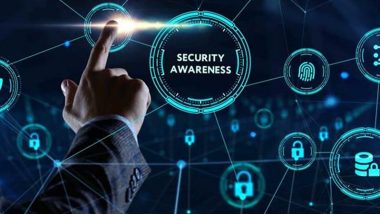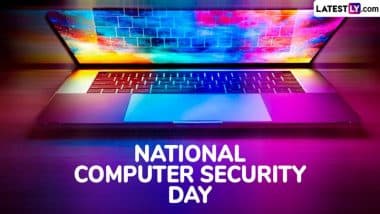Pop culture has a powerful influence on how people perceive various aspects of society, including technology. Popular media often vividly depicts how the digital world works, from movies to television shows, video games, and even novels. However, this influence is usually a double-edged sword in cybersecurity. While pop culture has brought awareness to cybersecurity issues, it has also contributed to creating myths and misconceptions. Understanding these dynamics is essential to discerning fact from fiction in cybersecurity.
The Impact of Pop Culture on Cybersecurity Awareness
Cybersecurity has become a mainstream topic in recent years, mainly due to the portrayal of hackers, data breaches, and high-tech heists in popular media. While cybersecurity was once the domain of experts and corporations, today, almost everyone has heard of terms like "hacking," "phishing," and "malware." This can be attributed to the growing visibility of cybersecurity issues in pop culture.
Cybersecurity in Film and Television
One of the earliest depictions of cybersecurity in pop culture can be traced back to the 1983 film WarGames. The movie introduced audiences to hacking, with a young protagonist who unwittingly hacks into a military supercomputer, nearly triggering World War III. This portrayal of hacking left an indelible mark on public perceptions of cybersecurity. From The Matrix to Mr. Robot, pop culture has frequently cast hackers as villains or anti-heroes, further shaping the public's understanding of cybersecurity.
While these portrayals help raise awareness about the potential dangers of a digitally connected world, they often lead to unrealistic expectations. For instance, many people believe that hacking involves complex, rapid-fire typing and magical code-breaking abilities when in reality, most cyberattacks exploit simple vulnerabilities and social engineering.
The Rise of Hacker Heroes
Shows like Mr. Robot and movies like The Girl with the Dragon Tattoo have glamorized hackers as geniuses capable of breaking into any system, often within minutes. While these characters provide entertainment, they also perpetuate the myth that hacking is an instant, all-powerful force. In reality, hacking requires time, patience, and an understanding of the target's weaknesses. Most attacks focus on exploiting human error rather than sophisticated code-cracking.
This romanticization of hacking leads to a public misunderstanding of cybersecurity. According to the research, the reality of cyberattacks is much more mundane than pop culture suggests. Most attacks are not the result of one individual’s brilliance but rather organized efforts by groups that exploit existing vulnerabilities in outdated software or manipulate individuals into revealing sensitive information.
The Myths Perpetuated by Pop Culture
Pop culture has introduced several misconceptions about cybersecurity that can hinder individuals and organizations from fully understanding the importance of securing their data. Here are some of the most common myths shaped by media:
Myth 1: Cybersecurity is Only for Experts
Movies and TV shows often portray cybersecurity as a highly technical field that only experts can navigate. While cybersecurity has complex elements, this myth leads many people to believe that only professionals must worry about securing their devices and data. In reality, basic cybersecurity practices, such as using strong passwords, enabling two-factor authentication, and being cautious of phishing emails, are vital for everyone.
The belief that cybersecurity is reserved for experts can cause everyday users to neglect their responsibilities in safeguarding their personal information. Pop culture needs to do a better job of highlighting the importance of individual responsibility in maintaining cybersecurity.
Myth 2: Cyberattacks Are Always Sophisticated
Another myth pop culture reinforces is that all cyberattacks are sophisticated, high-tech operations. Many people imagine hackers using advanced tools to penetrate highly secured systems. However, the vast majority of cyberattacks are far less dramatic. Phishing schemes trick people into providing sensitive information and are among the most common and successful cyberattacks.
Pop culture often overlooks the fact that human error is a significant vulnerability in cybersecurity. Clicking on a malicious link, reusing passwords across multiple accounts, or falling for a social engineering scam can be as damaging as a sophisticated hack. The focus on high-tech attacks in media can overshadow these more common, real-world threats.
Myth 3: Hackers Can Do Anything
In movies, hackers are often shown as omnipotent beings who can access any system, break any encryption, and control any device. This exaggeration creates the false impression that cyberattacks are inevitable and unstoppable. While hackers can indeed cause significant damage, they are not all-powerful. Effective cybersecurity measures, such as regular software updates, firewalls, and encryption, can prevent many attacks.
This myth can foster a sense of helplessness among the public, leading some to believe there is no point in investing in cybersecurity. Adopting best practices and staying informed about potential threats can significantly reduce the risk of falling victim to a cyberattack.
Realities of Cybersecurity in the Modern World
While pop culture has helped shape public perception of cybersecurity, the reality is far more nuanced. Cybersecurity is a critical aspect of modern life, impacting individuals, businesses, and governments. As the digital landscape continues to evolve, it is essential to separate fact from fiction and understand the real challenges of protecting data in a connected world.
The Growing Importance of Cybersecurity
The rise of cybercrime has made cybersecurity more critical than ever. With the increasing reliance on digital systems, from online banking to cloud storage, the potential consequences of a cyberattack have grown exponentially. Data breaches can lead to identity theft, financial loss, and reputational damage, affecting millions worldwide.
Governments and organizations recognize the need for robust cybersecurity measures, and individuals are encouraged to take more responsibility for securing their data. The widespread adoption of encryption, biometric authentication, and other security technologies is helping to mitigate some of the risks associated with cybercrime.
Education and Awareness
Education and awareness are among the most effective ways to combat cyber threats. While pop culture has brought cybersecurity issues into the spotlight, people must seek accurate, reliable information about protecting themselves online. Governments, schools, and companies increasingly offer cybersecurity training to help individuals recognize potential threats and take appropriate action.
As awareness grows, people are becoming more vigilant about safeguarding their data. Understanding the realities of cybersecurity, rather than relying on myths perpetuated by pop culture, can help individuals and organizations better prepare for and prevent cyberattacks.
The Role of Artificial Intelligence in Cybersecurity
One area where pop culture has not yet caught up with reality is the role of artificial intelligence (AI) in cybersecurity. While AI is often portrayed as a tool for hackers in science fiction, cybersecurity professionals increasingly use it to detect and respond to threats in real time. AI can analyze vast amounts of data to identify patterns and anomalies that may indicate a cyberattack, allowing quicker, more effective responses.
However, AI is not a silver bullet. Just as cybersecurity professionals can use AI to defend systems, hackers are also exploring ways to use AI to enhance their attacks. The ongoing arms race between cybersecurity professionals and cybercriminals highlights the need for constant innovation.
Conclusion
Pop culture has played a significant role in shaping public perceptions of cybersecurity, for better or worse. While media portrayals have raised awareness about the importance of protecting digital systems and data, they have also contributed to spreading myths and misconceptions. It is crucial to separate fact from fiction and understand the real challenges and solutions that exist in the world of cybersecurity.
As the digital landscape continues to evolve, education and awareness will be key in helping individuals and organizations protect themselves from cyber threats. While the allure of hacker heroes and high-tech heists will continue to capture the public’s imagination, real-world efforts to secure data, prevent cyberattacks, and protect privacy are far more complex—and far more important—than pop culture may lead us to believe.













 Quickly
Quickly





















